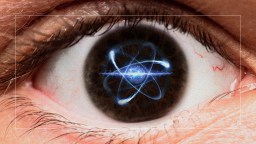Transcendent experiences that were once attributed to gods, angels, muses, or even possession, are now being demystified by neuroscience. Jamie Wheal, Director of Programs at the Flow Genome Project, explains that each culture has unique rituals and narratives when it comes to non-ordinary experiences of consciousness or ‘altered states’, whether that’s mediation, flow state, psychedelic experiences, or others. A farmer in India, a peasant in Mexico, and a coder in Silicon Valley will all have vastly different ways of approaching altered states, and will give vastly different descriptions once they come out the other side – perhaps they saw a vision of Ganesh the elephant God, received a message from the Virgin of Guadalupe, or produced a brilliant line of code while in a Matrix-like binary blur. However, those experiences are more alike than we think. Jamie Wheal and Steven Kotler devised a functional framework so they could compare non-ordinary experiences across cultures. Here, Wheal explains that they identified four common elements of altered states of consciousness, which they coined as STER: selflessness, timelessness, effortlessness and richness. Jamie Wheal and Steven Kotler’s book is Stealing Fire: How Silicon Valley, the Navy SEALs, and Maverick Scientists Are Revolutionizing the Way We Live and Work.
Jamie Wheal and Steven Kotler’s book is Stealing Fire: How Silicon Valley, the Navy SEALs, and Maverick Scientists Are Revolutionizing the Way We Live and Work.
Jamie Wheal: So when you're considering non-ordinary or altered states one of the first questions is what do they feel like? What's actually going on in those places and spaces? And one of the challenges in coming up with a good and consistent answer, not just for a specific state like meditation or a flow state or a psychedelic the state, is what qualities do they all share? Because each of those communities of practice over decades, centuries and even the millennia have accumulated their own storytelling or content about what the state they access are, what they mean and where you're supposed to go through them. So for instance, if you were a Buddhist meditator you will be instructed in all sorts of stages and levels and progressions of non-ordinary states of consciousness ranging from waking state all the way to white light void to Buddha consciousness, et cetera.
I if I am a peasant farmer in India and I have a non-ordinary state experience I might experience Ganesh, the elephant God in a rice patty. If I'm a peasant in Mexico I might experience the version of Guadalupe Hidalgo. If I'm coder in Silicon Valley I might experience the matrix and code mode, this is ones and zeros streaming all night as I bang away on my keyboard. And the reality is is that underneath those experiences are far more alike than the wrapping paper, the narrator wrapping paper of what people see based on culture, custom and biography. And what we attempted to do was create a functional framework that lets us talk about these things as apples to apples and really see the similarities. And what we realize is that because of the neurobiology there are four qualities that tend to arise pretty consistently regardless of which door you go through to get into these non ordinary states. And they are selflessness, timelessness, effortlessness and richness or STER for short.
And selfishness tends to happen because the areas of our brain, specifically the prefrontal cortex but including additional networks that connect, often turn off or completely light up. Either way they knock out our everyday waking sense of self-consciousness and self-awareness. So we end up momentarily lost our inner voice, lost our inner critic, lost our Jiminy Cricket and we are in a state of not thinking about our thinking. Timelessness happens for a similar reason. As basically different parts of our brain light up and turn off our ability to calculate time gets knocked out because it is a comprehensive measurement, it doesn't just occur in one single location in the brain. So when we start knocking out parts of the networks we lose our chronometer. And all of the neurochemistry, brain focusing, attention, learning, dries our attention we drop out of daydreaming about the past or the future and we get absolutely sucked into the immediate present moment so a feeling of timelessness comes with it. The effortlessness is just it's no longer about what I'm trying to do, it's not about exerting a grit or willpower, which a lot of people have been talking about and writing about these days and it's literally almost in the biblical sense it's sort of not my will but thy will. I feel myself swept along and it can be I'm jus self-propelled and it feels awesome or it's terrifying but I don't have a choice. But either way it's not me plotting one foot in front of the other to get to a goal I've decided. So that's the effortlessness. And then the final bid is the richness. And that's arguably the whole shooting match because when I knock out my self-consciousness I don't have a voice inside my head second-guessing, filtering. When I'm not in the past or the future I'm just in the deep present, when I am effortlessly being propelled the next thing that consistently seems to happen is we have access to far more information than we do in our regular waking state. And that is when we go from conscious processing, which is very limited and narrow, to unconscious processing, which is faster and vaster.
And Dr. David Eagleman, who is at Stanford who's a friend and a colleague and a board member of ours at the Flow Genome Project, constantly makes that case that really it's as if our conscious mind is sort of like the headlines of tomorrow's newspaper reporting on the reality of today. And when we get into non-ordinary states because of all the shifts in brain function and hormones and neural electricity we have access to more of that information in real time and the results often feel supernatural. People in the past historically have assigned this to the gods, to their muses, to fate, to possession, to angels, you name it we pretty much exhaust the gamut of all the ways we could say this is just too much, this is too cool, it's too inspired, it's to inform to possibly be me. So we've assigned it super natural origins, but in reality we now know it might just be super hyphen natural. It's just us in an optimated state. It's big data for our minds.







